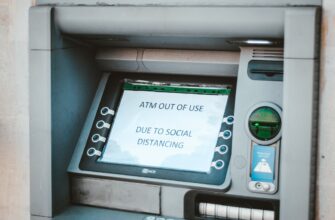- Store Crypto Wallet Offline Low Cost: Secure & Affordable Cold Storage Guide
- Why Offline Storage Beats Online Wallets Every Time
- Low-Cost Offline Storage Options Compared
- Paper Wallets (Cost: $0-$5)
- USB Drive Wallets (Cost: $5-$15)
- Old Smartphone Wallets (Cost: $0-$50)
- Step-by-Step: Creating Your Low-Cost Paper Wallet
- 5 Essential Security Practices for Offline Storage
- Frequently Asked Questions (FAQ)
- What’s the absolute cheapest offline storage method?
- Can I use a regular USB flash drive safely?
- How do I access funds in an offline wallet?
- Are offline wallets vulnerable to physical theft?
- How often should I update my offline storage?
Store Crypto Wallet Offline Low Cost: Secure & Affordable Cold Storage Guide
With cryptocurrency thefts surging by 600% since 2020, securing digital assets has never been more critical. Storing crypto offline (cold storage) remains the gold standard for protection against hackers—and contrary to popular belief, it doesn’t require expensive hardware. This guide reveals practical, low-cost methods to store your crypto wallet offline without compromising security. Whether you’re safeguarding $100 or $100,000, these budget-friendly solutions put impenetrable security within everyone’s reach.
Why Offline Storage Beats Online Wallets Every Time
Online wallets (hot wallets) constantly connect to the internet, creating vulnerabilities for hackers. Offline storage keeps private keys completely air-gapped—isolated from network threats. Consider these advantages:
- Hacker-proof security: No internet connection = no remote attacks
- Malware resistance: Offline keys can’t be stolen by keyloggers or viruses
- Long-term reliability: Physical storage doesn’t depend on company servers
- Cost efficiency: Avoid recurring subscription fees of premium services
Low-Cost Offline Storage Options Compared
You don’t need a $150 hardware wallet for secure cold storage. These affordable alternatives offer robust protection:
Paper Wallets (Cost: $0-$5)
Generate keys offline, print them, and store the physical copy. Use free tools like BitAddress.org in offline mode:
- Pros: Completely free if you own a printer; ultra-portable
- Cons: Vulnerable to physical damage; requires meticulous handling
- Tip: Laminate printed sheets ($3-5) for water/fire resistance
USB Drive Wallets (Cost: $5-$15)
Load a basic USB drive with wallet software like Electrum in offline mode:
- Pros: Reusable; encrypted options available
- Cons: Limited lifespan (3-5 years); corruption risk
- Tip: Use brand-new drives and store multiple copies
Old Smartphone Wallets (Cost: $0-$50)
Repurpose an unused Android/iOS device with these steps:
- Factory reset the device
- Install open-source wallet (e.g., Trust Wallet)
- Generate keys in airplane mode
- Never reconnect to internet
Bonus: Add a $5 Faraday bag to block all signals.
Step-by-Step: Creating Your Low-Cost Paper Wallet
Follow this secure method to generate a paper wallet for under $5:
- Disconnect your computer from Wi-Fi/ethernet
- Download BitAddress.org source code (github.com/pointbiz/bitaddress.org)
- Open HTML file in browser while offline
- Generate keys by moving mouse randomly
- Print directly (no saving to disk!)
- Laminate or seal in waterproof bag
- Store in fireproof safe or safety deposit box
Critical: Destroy printer memory after use if possible.
5 Essential Security Practices for Offline Storage
Maximize protection with these zero-cost strategies:
- Multi-location backups: Store copies in 3+ physical locations (e.g., home safe, bank vault, trusted relative)
- Passphrase encryption: Add a 25th word seed phrase not stored with your wallet
- Stealth addresses: Never publicly associate wallet addresses with your identity
- Regular integrity checks: Verify backup readability every 6 months
- Transaction hygiene: Use temporary hot wallets for frequent transfers, keeping bulk assets offline
Frequently Asked Questions (FAQ)
What’s the absolute cheapest offline storage method?
Paper wallets are 100% free if you already own a printer and paper. For under $1, handwritten steel wallet plates provide fire/water resistance.
Can I use a regular USB flash drive safely?
Yes, but only if: 1) It’s brand new (never connected online), 2) You encrypt it with VeraCrypt, and 3) You create multiple copies due to drive fragility.
How do I access funds in an offline wallet?
Import your public key into a hot wallet to view balances. To spend: Create unsigned transactions online, transfer to offline device via SD card/USB for signing, then broadcast the signed transaction online.
Are offline wallets vulnerable to physical theft?
Yes, but encryption mitigates this risk. Combine physical security (safes, hidden locations) with strong passphrases. Thieves would need both your physical backup AND decryption knowledge.
How often should I update my offline storage?
Only when receiving funds (generate new addresses) or if backup integrity is compromised. Frequent changes increase human error risks—”set and forget” is ideal for long-term holdings.
Final Tip: Test recovery with small amounts before storing significant value. With these low-cost methods, you achieve enterprise-grade security for less than the price of a coffee—making offline storage accessible to every crypto holder.








